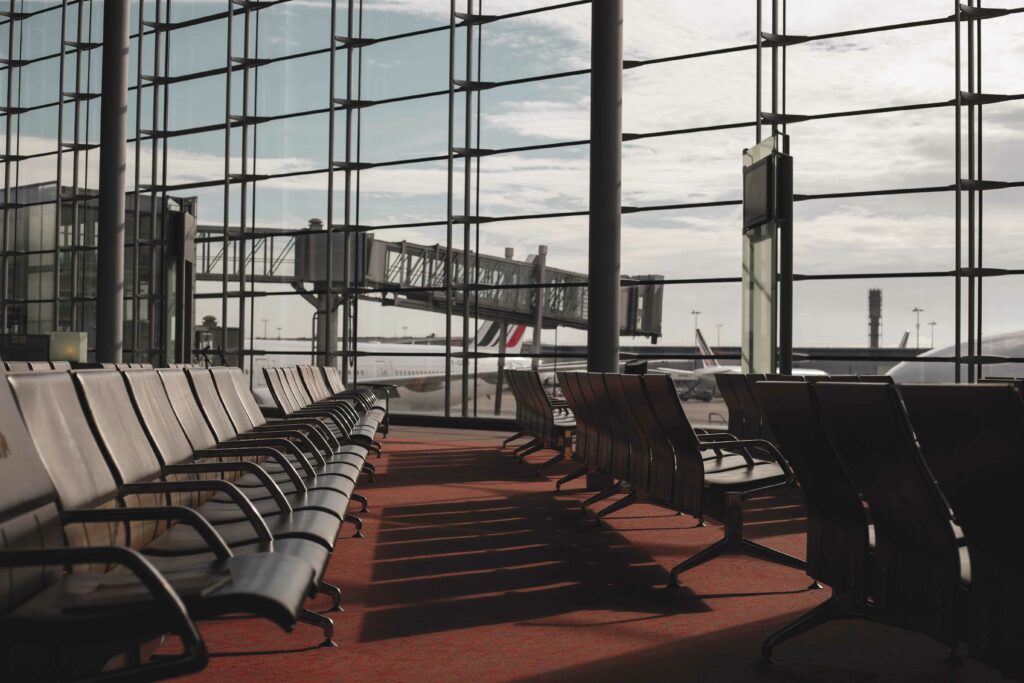An ambitious regulatory framework can help unlock opportunities for multimodal travel in Europe
"To enable true like-for-like comparison for consumers to search and book a multimodal trip, all MDMS must be treated equally, based on the merits of their activities: there must not be any special treatment of aviation-specific or rail-specific platforms as this would undermine the objectives behind this initiative and unlevel the playing field at transport mode level" writes Koen Baekelandt, Head of Enterprise Regulations at Amadeus IT Group, in this new opinion piece, where he reflects on the discussions of the 11th Florence Intermodal Forum.
This article by Koen Baekelandt, Head of Enterprise Regulations at Amadeus IT Group, originally appeared in the European Transport Regulation Observer “Aviation and Multimodal Digital Mobility Services in the EU” (July, 2023).
The multimodal challenge for the EU Commission
The EU Commission is developing a new regulatory framework to enable multimodal travel by ensuring that digital platforms (Multimodal Digital Mobility Services or “MDMS”) can combine air, rail, ferry, and other ground transportation in a single trip. By enabling more competition between operators across transport modes, consumers can make more sustainable trip choices, thus realising a modal shift in Europe and giving consumers the benefits of a single market for mobility. This new regulation needs to ensure that:
1. Consumers have access to travel information on competing multimodal offers and the ability to search, book, pay, and receive travel documents to make better and more sustainable (less carbon-intensive) travel decisions;
2. Consumers can choose between different MDMS, most importantly including independent intermediaries, to be confident that the information provided by them is comprehensive, transparent, and accurate;
3. Intermediaries have access to content that allows them to aggregate transport information following FRAND (fair, reasonable, and non-discriminatory) principles, combining modes and operators using objective ranking criteria, thus offering consumers a real choice between competing offers;
What should an ambitious regulation look like?
Access to data
The key enabler of multimodality remains access to operators’ data in the key transport modes, including air and rail, as the key environmental benefits will come from rail replacing short-haul air and car travel. A new regulation must therefore include an obligation for large airlines and railways to make static and real-time data on fares, schedules, availability, optional services, delays, changes, etc. (“content”) available to all MDMS on FRAND terms and conditions. Today many large airlines and railways resist sharing data, including those that are indispensable to consumers. It is key to include large airlines because, without their content, consumers will not use MDMS to compare and substitute flights with trains.
The new regulation also needs to balance content obligations of the operators with corresponding obligations for MDMS to treat all operators in a non-discriminatory manner, including an obligation for all MDMS platforms to integrate, upon request, all transport operators on FRAND terms. This should apply equally to MDMS that are owned or controlled by a transport operator (i.e., vertically integrated MDMS), Mega online platforms such as Google Flights, and aggregators.
It is important to recognise that MDMS that are controlled by transport operators will normally not have the incentive to integrate competing transport operators, such as a small airline. In a market where vertically integrated MDMSs are controlled by an indispensable operator, they must allow the integration of competing transport operators in their own MDMS on terms similar to their own.
Level playing field
To enable true like-for-like comparison for consumers to search and book a multimodal trip, all MDMS must be treated equally, based on the merits of their activities: there must not be any special treatment of aviation-specific or rail-specific platforms as this would undermine the objectives behind this initiative and unlevel the playing field at transport mode level. Air, rail, coach, and other transport modes’ offers must be visible in a single display so that consumers can compare and choose the best option, including more sustainable combinations.
This means that there should not be any distinction between business-to-business (B2B) or business-to-consumer (B2C) MDMS. If B2B MDMS do not have access to the content of large transport operators on FRAND terms, then most B2C platforms will not be able to provide a comprehensive multimodal offer to consumers, as B2C players (except Google) rely on B2B technology partners like Amadeus to efficiently aggregate the content of hundreds of transport operators.
Transparent ranking criteria
Finally, the regulation should oblige all MDMS to apply non-discriminatory and transparent display and ranking criteria, provided MDMS obtain FRAND access to information of transport operators. A platform without any relevant transport content is useless for consumers.
To promote transparency, choice, and innovation, the regulation should specify ranking criteria that consumers can select:
a) a minimum set of mandatory search options (including CO2 emissions if MDMS receive the information from the transport operators or a neutral source);
b) optional criteria depending on what the user wants to see and oblige all MDMS to apply these criteria in a non-discriminatory manner.
Vertically integrated MDMS and Mega B2C platforms should be subject to these and additional obligations, including non-discriminatory treatment of competing MDMS versus their own MDMS in terms of content and a self-preferencing ban. Such sector-specific regulation would complement existing rules such as competition law and the EU Digital Markets Act.
Conclusion
Unless the MDMS regulation ensures the above, the Commission’s sustainability ambition may well remain a political aspiration, failing to unlock a modal shift that is estimated to reduce carbon emissions equivalent to 16 million cars per year [1] and hampering the willingness of existing and new intermediaries to invest in technology solutions for multimodal travel. Without it, EU consumers and the environment will continue to bear the costs of a fragmented passenger transport market.
[1] White Paper by Kearney, November 2022, available at https://www.kearney.com/digital/article/-/insights/digitally-driven-multimodality-can-supercharge-sustainable-growth-of-european-passenger-mobility






